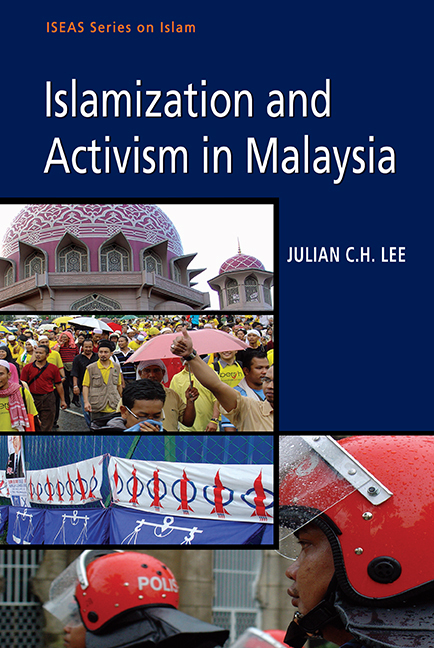Book contents
- Frontmatter
- Dedication
- Contents
- Acknowledgements
- Abbreviations
- Introduction
- 1 On Islam, Democracy, and Activism
- 2 A Short History of Malaysia
- 3 Malaysia as an Islamic State: The Debate
- 4 Conflict of Jurisdiction: Civil versus Syariah Law
- 5 Islamist Lawyers’ Views
- 6 Social Activism and the Article 11 Coalition
- 7 Questioning Orthodoxies, Criticizing Zealotry
- 8 Electoral Engagements
- Conclusion: Islam, Democracy, and Activism in Malaysia
- Bibliography
- Index
- About the Author
- Plate section
2 - A Short History of Malaysia
Published online by Cambridge University Press: 21 October 2015
- Frontmatter
- Dedication
- Contents
- Acknowledgements
- Abbreviations
- Introduction
- 1 On Islam, Democracy, and Activism
- 2 A Short History of Malaysia
- 3 Malaysia as an Islamic State: The Debate
- 4 Conflict of Jurisdiction: Civil versus Syariah Law
- 5 Islamist Lawyers’ Views
- 6 Social Activism and the Article 11 Coalition
- 7 Questioning Orthodoxies, Criticizing Zealotry
- 8 Electoral Engagements
- Conclusion: Islam, Democracy, and Activism in Malaysia
- Bibliography
- Index
- About the Author
- Plate section
Summary
THE PRE-COLONIAL PERIOD
According to Alberto Gomes, archaeologists tend to agree that Malaysia's aboriginal populations are descendants of Neolithic and Hoabinhian humans who arrived more than 5,000 and 10,000 years ago respectively (1999, pp. 78–79). Those who are known today as Malays came later from what is now known as Indonesia.
West or peninsular Malaysia was in the path of a trade route between China and India. Sources indicate that Indian traders visited the peninsula in the first centuries C.E. The influence on Malay culture of these Indians persists in the form of language, political practices, art, and popular beliefs. Later, the peninsula lay in the path of trade between China, the Middle East, and the West (ibid., pp. 79–80).
In the 1400s a small settlement of Sumatran refugees became the trading centre for the region. Malacca, as it became known, was soon to host Malays, Arabs, Indians, Javanese, Sumatrans, Bugis, Borneons, Filipinos, Persians, and Chinese. Although these groups interacted with each other, they remained in their own ethnically polarized enclaves. In 1511 Malacca fell to the Portuguese. The Malay rulers and their subjects fled to other areas of the peninsula. Between 1500 and 1800 large numbers of Indonesian immigrants came to the various Malay states and displaced and even enslaved some of the indigenous people. In 1641 the Dutch took over Malacca. Malacca was later taken over by the British in the 1800s along with the rest of peninsular Malaysia (ibid., p. 80).
THE BRITISH COLONIAL PERIOD
In the period between 1874 and the First World War, the British gained complete control of the Malay peninsula. The British found it difficult to induce Malays, who were largely agrarian, to work (Jomo 1990a, p. 4) and also felt that “the Malay, despite his charm, was indolent and shiftless and resistant to change and progress” (Roff 1967, p. 25). “Proletarianised immigrants” (Jomo 1990a, p. 4) from China and India were thus imported. Indentured Indian immigrants worked on rubber plantations, and many Chinese worked in tin mines.
Tin had been mined for centuries but was expanded by the British, especially in the state of Perak and particularly after the 1880s when railroads were installed. Chinese mine-operators rented land from Malay Sultans and large numbers of Chinese coolies were brought in to work in these mines.
- Type
- Chapter
- Information
- Islamization and Activism in Malaysia , pp. 36 - 50Publisher: ISEAS–Yusof Ishak InstitutePrint publication year: 2010

